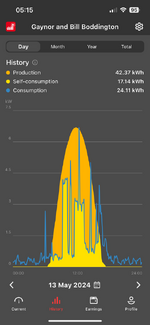The other thing is that wind and solar have distinct impacts. Wind is more commonly used in areas that otherwise get a lot of their electricity from coal, and coal is estimated to have much larger environmental costs: "the United States coal fleet released 95×, 3×, and 2× more SO2, NOx, and CO2 than natural gas plants, respectively, per MWh of electricity produced," Millstein, O'Shaughnessy, and Wiser write. Since wind is displacing more coal, its benefits are correspondingly larger.
As a result, the environmental and health benefits of wind in 2022 are estimated as being $143 for each Mw-hr, with solar providing $100/Mw-hr in benefits. Given the amount of power generated by wind and solar that year, that works out to a total of $62 billion and $12 billion, respectively. For the entire 2019–2022 period, they total up to $250 billion. Due to the uncertainties in various estimates, the researchers estimate that the real value for wind is somewhere between $91 and $183 per Mw-hr, with solar having a proportionate uncertainty.

